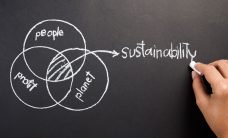 Adobe Stock
Adobe Stock
Last year and 2021 so far have been extraordinary for all of us as Covid impacted us in many ways, both in our personal and in our professional lives. And, even if the pandemic is not yet behind us, there is a lot to learn from it. Perhaps the clearest finding for professionals in procurement and supply chain fields has been this: Sustainability is not a nice-to-have feature. It’s time to bake in the measurements for a company’s commitment to ESG — the environmental, social and governance policies that set businesses apart these days. It is time to walk the talk!
To assist with the issues, this Spend Matters PRO market landscape series will provide a deep dive into sustainability in procurement — offering both a market-level perspective and an analysis of vendors that can help organizations address the challenge as they do business in the whole cycle of source-to-pay (S2P). This series for PRO subscribers is detailed below, and additional ESG coverage for all readers — like a glossary of terms — will be available on spendmatters.com.
Covid revealed a couple of things that many professionals and organizations had ignored, at their own risks and costs. Despite risk management being mentioned for years as a critical value driver for procurement organizations, and also an opportunity for positioning the function as more than a back-office one, the reality that the Covid pandemic revealed is that most organizations were ill-prepared to face such a situation. This is even more troublesome because there had already been signs that a pandemic was not just something for Hollywood movies (SARS, Ebola, etc.).
Many organizations are also victims of a self-inflicted injury that jeopardized their capacity to operate during the crisis. They were (and still are) highly dependent on a very limited number of suppliers. This is the result of years of low-price/low-cost country sourcing and volume aggregations to increase savings. In addition, for some, the race after hyper-efficiencies created a “perfect storm” as they reduced their inventories to the bare minimum (if they existed) and put just-in-time processes in place. All of this created an almost zero tolerance for glitches at suppliers and/or on routes from suppliers, especially on such a global scale.
However, it seems like Covid will be the wakeup call that the supply chain world was waiting for. As a reaction to the events of the last 18 months, the realization that organizations need better supply assurance (and that the procurement function is critical in achieving this) spreads among organizations and management boards. This shift in priorities and mindset is an opportunity to go beyond ensuring business continuity. It is, in fact, a chance for building more antifragile, more sustainable supply chains.
This may be a daunting task, but, in the end, looking at sustainability from a supply chain point of view is really a good thing — because it is good for the planet, the people living on it and, of course, for business.
In this PRO sustainability series, we will provide:
* A definition of what sustainability means for procurement (Hint: It’s more than business continuity)
* A look at the economic aspects of sustainability beyond P&L impact
* Examples of what sustainability encompasses for each organization
* A mapping of sustainability factors into S2P
* An examination of the critical capabilities that procurement technology should include
* An ROI model of the business case for investing in ESG/sustainability technology for procurement
* Understand how sustainability is addressed by procurement technology suites and by niche solutions/specialists
Additional posts in this ESG market landscape series will provide:
* Market segmentation of sustainability coverage in S2P, including relative levels of capability by vendor group
* Profiles of vendors by segment, with specific analysis of fit to sustainability requirements
* Deep dives into specific topics, including carbon footprint tracking, labor rights/modern slavery, and multi-tier supply chain visibility
* New profiles of example vendors for each segment


